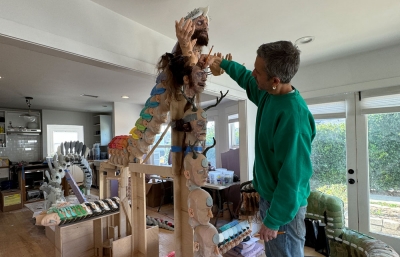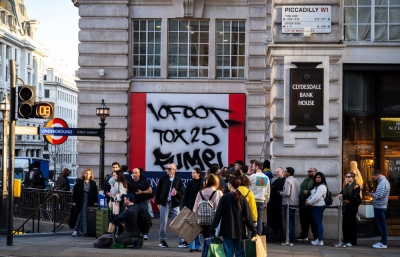Heath Ceramics
Edith Heath: A Life in Clay @ Oakland Museum of CA
Interview by Kristin Farr

Edith Heath, an indomitable innovator in her field, developed her iconic Coupe dinnerware line with a distinctly California aesthetic. She fine-tuned every aspect of her studio, from the chemical properties of her material and proprietary low-fire glazing techniques, to the architecture of her Sausalito, California factory.
Designer Catherine Bailey and her family now own and operate Heath Ceramics, which has flourished under their stewardship. I spoke with Catherine on the occasion of the Oakland Museum of California’s upcoming exhibition, Edith Heath: A Life in Pottery, which highlights Heath’s work as a point of pride for California and beyond: “Durable, not delicate, simple, yet stylish, Heath Ceramics is an icon of American design.”
Kristin Farr: Heath Ceramics celebrated 70 years in 2018. Did you create special projects to celebrate that milestone?
Catherine Bailey: It felt amazing to celebrate that milestone and, just prior, Robin [Petravic] and I celebrated our 15-year anniversary of ownership. At that time, we looked back on what we had done since 2003 and decided to take another look at Edith’s classic Coupe line and refresh the glazes. We were inspired by our vast library of glazes from past and present. The collection is currently available today and emphasizes how classic those designs are.
How is your team handling these uncertain times?
Our team is amazing, resilient and creative. Unfortunately, we had to shrink the team as our business has changed so radically, but we’re settling into a new rhythm and tackling everything that comes at us. Going into this, we were fortunate to have a lot of products—this inventory allowed us to put more emphasis on our online business and the conversation with our customers, who have been incredibly supportive and a real beacon of optimism for us. Some of these people have been customers for 50 years and through many generations of their families, so we have a place in their homes and family life, where we’re all spending a lot more time right now. We’re leaning into our online business and social media to fill the void of our closed showrooms. Our creative team is working in new ways to capture ideas and tell stories, while not having access to any of our usual facilities.
What’s been the timeline of ownership for Heath, and did you and Robin have backgrounds in ceramics?
The company was started in 1948 by Edith and Brian Heath. Edith was a ceramicist with an interest not only in form, but an equally strong, if not stronger interest in material and process. Her husband, Brian, joined her in the business and built and ran the factory. We are the second family to own Heath after them, taking it on in 2003, when it was well past its golden years and needed a revival. The two of us have a background in design, me in industrial design and Robin in product design and engineering, and when we first stumbled upon this business, we were excited by having design, making and selling all under one roof. This would enable us to design and run a company in a totally holistic sense. The design legacy of the company was also a great starting point to evolve, versus starting from scratch. We knew nothing about ceramics at the time, so learning from the ground up—always an essential part of any design process—was critical.


I interviewed artist Brendan Monroe when he was in residence at the Heath Factory in San Francisco. Tell me about his project and other highlights from your artist collaborations.
Brendan did a lot of that work in San Francisco in Tung Chiang’s studio, which is an inspiring place in itself. Tung Chiang is Heath’s Clay Studio Director. To be able to walk in there every few days and see Brendan’s surreal ideas and forms take shape inspired us all.
He didn’t have a deep background in ceramics at that time, and he took huge risks technically. His work is really time-intensive. At the time, we would be so stressed out that all that work would end in an explosion in the kiln, or some sort of glaze disaster, but it didn’t. Every piece felt like a well planned miracle. He’s not just an amazing artist, but really has an incredible intuition for ceramics.
We’ve also done some small but wonderful projects in wood with Julian Watts. My favorite was a collaborative object that he did with Tung. Julian did a sculptural-like top for a vessel that Tung designed, and the mixture of textures and materials was stunning.
What is one of Heath’s most remarkable architectural projects?
The Norton Simon Museum in Pasadena, California is brilliant and totally intact. The entire exterior is clad in 9 x15” tiles layered with glaze, and all the corners on the building are curves. It is a beautiful intersection of beauty and function between the tile and architecture.
As the soul of Heath Ceramics, what were Edith’s most memorable characteristics?
I didn't get to spend a lot of time with her personally. She was quite old when we took over the business, so what I know comes from experiencing her ethos by working with the same materials and in the same environment she did. Robin and I work in Edith and Brian’s old office, with mostly the same furniture, the same clock; even our desk drawers are full of their things.
Edith was determined, innovative, persistent, and stubborn, and not likely to follow trends, which is one reason that Heath is still around, and most of the other potteries have disappeared. She believed that how the ware was made was integral to the design, and thus the company's success. Nothing has been outsourced to another manufacturer. She believed that if you made good, honest products, the product would sell itself. She also had a great personal style!

Tell me about the origins and make-up of the unique clay bodies she developed.
Heath’s proprietary clay body is the first and still remains the only low-fire stoneware—an innovation created in 1947 that still leads the industry. Our ceramic clay bodies require one firing, as opposed to the more typical two firings, and are fired at a lower temperature than is customarily used to reach the same levels of durability. By rebuilding our kilns in 2009, we increased our kiln capacity, allowing us to fire more tile per kiln, while at the same time, reducing gas consumption in each firing.
Who are the other core team members carrying on Edith’s creative legacy?
Winnie Crittenden is Brian Heath’s niece and worked alongside Edith for years. She is a glaze technique expert. She now works closely with Tung Chiang, in his work at Heath Clay Studio and on any other other project where we need the highest level of craft in the work, or when we are experimenting with new ideas and concepts. She is a living and working treasure, and her creativity and passion for ceramics and glaze inspire us every day.

I’ve always been interested in the idea of “seconds.” Tell me about how you make those pieces available and how they’re determined to be seconds?
Our products require a lot of craft because of the handwork, and have a lot of variation because of the materials we use. Most companies will have one glaze base and just change the colorants. We use many, which makes things complicated, and can create technical challenges, and thus less “first” quality pieces, but we also know it’s what makes Heath, Heath. We embrace our seconds, just as Edith did, and often they are pieces where customers cannot see a difference from first quality pieces.
There is either too much variation in the glaze, pin holes in the glaze, slightly misshapen forms, or anything else that isn’t intended, but they will function 100%. Our first quality pieces are not perfect, but we have standards that we match to. Our quality control team has the challenging job of sorting out the seconds. They are all sold in our Sausalito showroom, right next to the factory.
The Heath’s homes in Sausalito and Tiburon, California, including the barge, seemed like art projects themselves.
They really were art projects for Edith. The barge was gigantic, and it was located in Sausalito, where I believe it was renovated, then moved to their land, which was waterfront in Tiburon. They sailed over there and beached it, and lived in it while they built other structures. Edith designed and built her ideas there, usually without permits, from what I understand. She had a vision and didn’t want it compromised by building codes or anyone else's ideas of functionality. The property was hidden enough that she was able to bring all her ideas to life there. I only wish it was still there for us to see today.
Edith Heath: A Life in Clay is set to run June 27, 2020–January 31, 2021. For updates, visit the Oakland Museum of California online, OMCA.org





